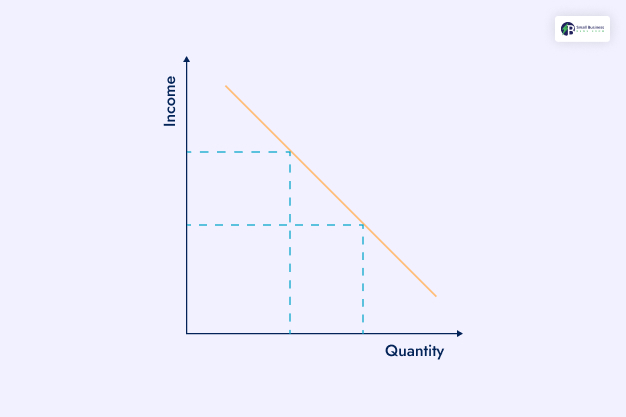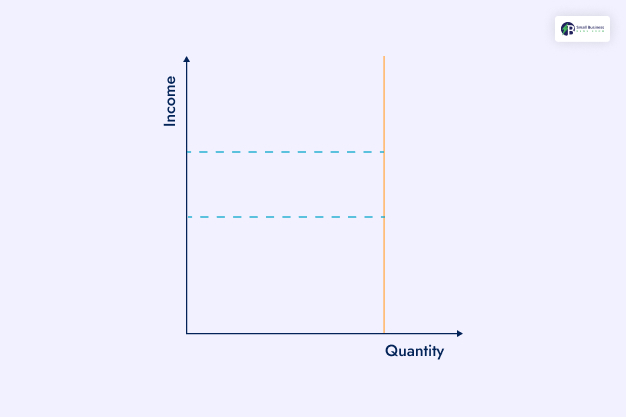Table Of Contents
Income Elasticity of Demand: What Is It, Working, Importance, And More
Last Updated on: December 4th, 2025
It often happens that whenever we get our salary or get a bonus at work, the first thing that comes to our mind is shopping. But have you ever considered that what if, due to your increased shopping, the demand for something also increases? That is exactly what we are going to talk about today – the elasticity of income demand, or YED.
In this article, you will learn about income elasticity of demand and how it works for businesses. Apart from that, this article will talk about the importance of this measure in the world of economy, finance, and business. Hence, to learn more, read on to the end of the article.
|
Essential Information:
|
What Is Income Elasticity Of Demand?
According to Science Direct, “The income elasticity of demand is defined as the percentage change in demand divided by the percentage change in income.“
Income elasticity of demand is a concept that measures the direct relationship between a person’s income and product demand. These demands for certain goods and services are either negative or positive, even though they can be non-responsive to specific products.
It is often seen as a person’s income and the demand for a specific product or service. However, it should not be confused with the demand-price equation.
Assuming that all the other factors affecting the demand are constant. The demand for any ordinary good and the income of someone is directly linked to each other.
It is a response to the income adjustment of any consumer. If the income elasticity increases for a certain product, that means there is a greater shift in demand with the income change.
How Does The Income Elasticity Of Demand Work?
Primarily, by measuring the income elasticity of demand, you can find out the responsiveness of the change in demand for goods in comparison to the change in consumer income.
For example, consider that the measure of income elasticity of demand is high for a particular good. Then, the price of goods will depend a lot more on changes in consumer income.
Generally, a business might determine the income elasticity of demand in the case of its products. This helps businesses to find out how a business cycle may impact their sales. As a result, they might make changes in production and sales processes. This will help the business to prepare beforehand in case of changes in the income of consumers.
Moreover, a business can also find out the demand level for inferior goods and normal goods. For instance, for a business, normal goods have a higher value of income elasticity of demand. Hence, as the income of consumers rises, they demand more goods at each level of price.
On the other hand, normal goods that have an income elasticity of demand value between 0 and 1 are necessary goods. These are those products and services that consumers will buy even if their income levels change. This happens to be an important factor for businesses.
Interestingly, with the rise in income, consumer expenses on necessity goods decline. Also, inferior goods have a negative income elasticity of demand. Hence, as the income of consumers rises, they limit buying inferior goods. Similarly, luxury goods act a lot like normal goods. However, the value is greater than 1 for luxury goods.
How To Calculate Income Elasticity of Demand?
There is a certain formula for how you can calculate the income elasticity of demand. The income elasticity of the demand calculator is very important.
Hence, the income elasticity of demand formula is how to calculate it.
Income Elasticity Of Demand (YED) = % change In quantity demanded / % change in income
Here,
- % Change In Demand Quantity= It is the Change in the Demand Quantity / The Original Demand of the Quantity
- % Change In Income of Consumer= The Change in Income of the Consumer / The Original Income of the Consumer.
Luxury And Normal Goods
When it is for normal or inferior goods, the coefficient that is used to measure income elasticity is YED. The income elasticity of demand is elastic or non-elastic based on a certain product.
When the product is income-elastic, then the YED is usually more than zero. In the case of Normal goods and products, the YED is positive. This means that when the income of the consumer increases, the demand for a product also increases.
YED, or the income elasticity coefficient for standard demand of necessities, remains between 0 and 1. Few of the standard necessities are milk, medicine, or even medicines.
Luxury goods, on the other hand, have a high-income elasticity. Examples of such luxury goods are high-end jewelry, electronics, or clothes. It is possible that when a person’s income increases, there is a possibility that they might invest in certain luxury goods.
Inferior Goods
When you move towards inferior goods, the YED is less than 0, as the goods are of negative income elasticity. In cases of Inferior goods, with the increase in consumer income, the demand for certain products decreases. Inferior goods normally have more superior alternatives.
For example, if your income increases, then you are more likely to opt for a cab to travel rather than take a bus. Here, public transport is the inferior good.
Types Of Income Elasticity Of Demand
YED can be divided into three distinctive classes based on their numerical value.
1. Positive Income Elasticity Of Demand
The positive YED, the income of a consumer, rises, and with that, the demand also increases. And with the decrease in income, the demand for the commodity also decreases. The positive YED is usually for normal goods.
The upward angle of the slope indicates that with the increase in income, the demand for commodities increases. And vice versa.
2. Negative Income Elasticity Of Demand
With the negative YED and the increase in consumer income, the demand for commodities decreases. And the demand increases with the decrease in consumer income. The negative income elasticity of demand is usually for inferior goods.
The downward angle of the slope indicates that with the increase in income, the demand decreases and vice versa. When your question is about which product is the income elasticity of demand most likely to be negative, – here is your answer:
3. Zero Income Elasticity Of Demand
The Zero income elasticity of demand, the increase in income, has no effect on the demand for commodities. These commodities are known as essential products. For instance, with the increase or decrease in income, certain commodities are always essential, like salt.
What Are The Uses Of Income Elasticity Of Demand?
Forecasting Demand
The YED tends to predict the demand and supply of commodities in the future. Forecasting demand is made easy through income elasticity demand. Through this, there is a change in demand and wages for consumers and commodities.
Investment Decisions
For business investors, it is important to know the national income. This helps them to know which market sector to invest in. Knowing which market to invest in can help to predict what commodity is going to increase in demand.
Let me give you an example of the elasticity of income demand:
Question: Which Of The Following Statements Illustrate The Income Elasticity Of Demand?
- A rise in “Annie’s income by 5 percent decreases the supply of canned fruits by 6 percent.”
- A salary cut and no other changes have resulted in Mary buying less fast food.??
- Poor economic conditions result in higher unemployment and lower aggregate demand.?
- A 2 percent fall in the price of peanuts increases? Ralph’s demand for almonds by 5 percent.?
Answer: A salary cut and no other changes have resulted in Mary buying less fast food.
Frequently Asked Questions (FAQs):
- What Is The Importance Of Income Elasticity Of Demand?
The YED is important for businesses and industries to predict the demand forecast of products and services.
- Can Income Elasticity Of Demand Be Negative?
Yes, negative YED is quite possible for certain commodities, which are inferior goods.
How Does the Income Elasticity Of Demand Differ From the Price Elasticity Of Demand?
The YED is used to measure the changes in the percentage of demand that is due to a change in price and always the change in income.
Wrapping Up!
Income elasticity of demand is one of the easiest ways of forecasting the demand for certain products and services. Big companies and industries use this process to determine which of their products are in high demand. Now that we know how to calculate income elasticity of demand, it will be easier for you to do it.
Investors also use this equation to know which sector of the market to invest in. Hence, you can pretty well understand how important YED is.
Read Also:



















